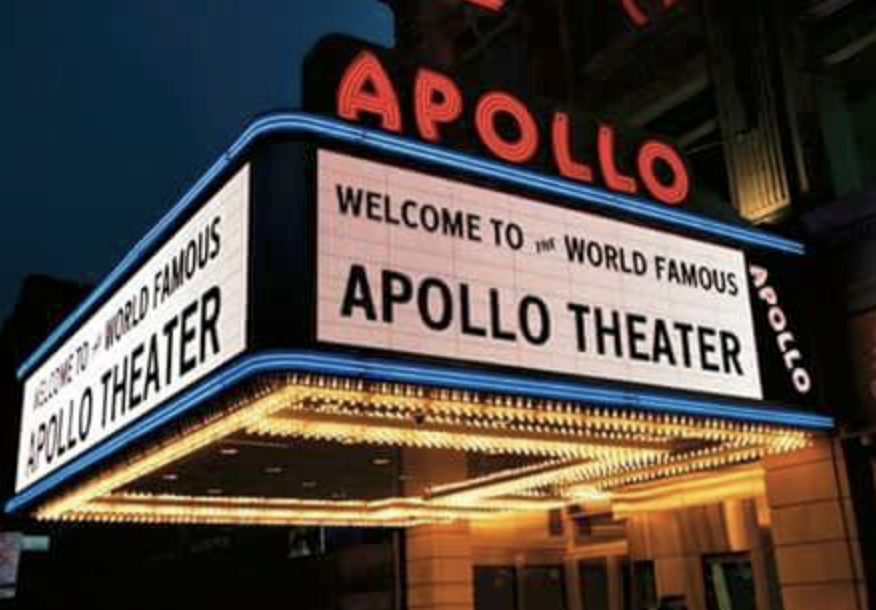This date celebrates the opening of The Apollo Theater in 1933.
Located at 253 West 125th Street in central Harlem, New York City, The Apollo Theater was the most important venue in Black show business from the 1930s through the 1970s, when waning popularity caused it financial problems. The theater itself began its life in 1913 as Hurtig and Seamon’s Music Hall, a venue frequented by white vaudeville acts that entertained predominantly white crowds until the 1930s. Sidney Cohen purchased the theater in 1933 and renamed it the Apollo, replacing the vaudeville fare with black entertainment.
The Apollo’s first show in 1934, Jazz a la Carte, featured Benny Carter’s big-band and helped to solidify the theater’s new role as the City’s primary African American performance venue, overshadowing the Lincoln and Lafayette theaters. With live broadcasts that featured the Duke Ellington and Count Basie orchestras, the Apollo became a mecca for jazz bands in the 1930s and 1940s. By the 1950s, the Apollo Theater was the nation’s top stage for established black artists and the Apollo’s famous Amateur Night, in which unknown performers had their talent assessed by the notoriously raucous Harlem audience, had become a springboard for numerous careers.
Ella Fitzgerald, Sarah Vaughan, and Pearl Bailey, for example, were all early Amateur Night winners, and later acts like the Jackson 5 and Stevie Wonder also enjoyed their first major exposure at the Apollo. As musical styles changed, the theater evolved with the times, booking rhythm and blues, gospel, funk, soul and hip-hop acts, and hosting landmark performances by artists like James Brown. During the 1970s the Apollo steadily lost money, forcing its closure in 1977. Its declaration as a national historic landmark in 1983 secured the building’s survival, but efforts to make it a viable performance house throughout the 1980s failed.
The theater was taken on by a nonprofit organization in 1991, which intended to make the theater a significant part of Harlem’s 125th street renewal.
Written by Dianne Washington

